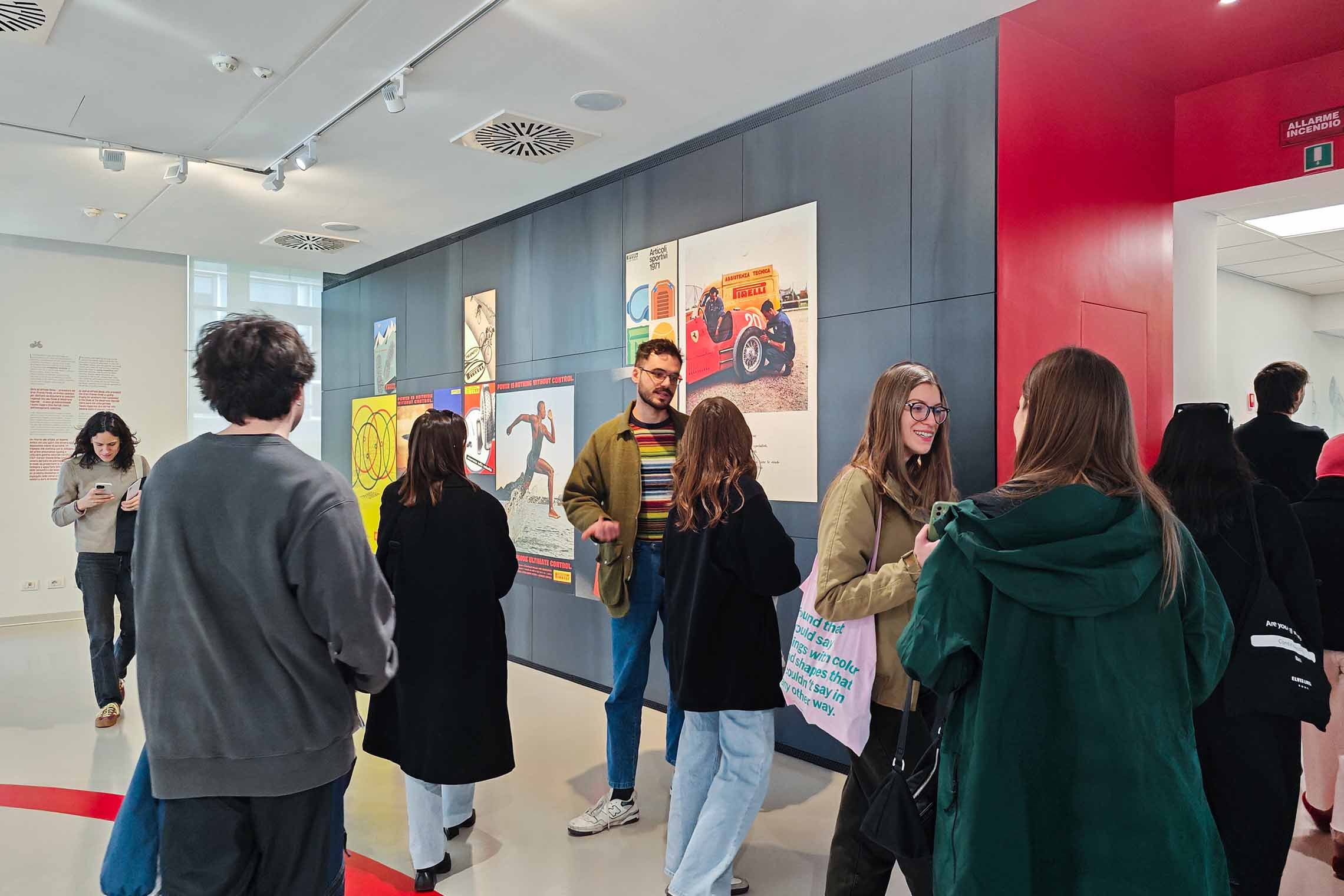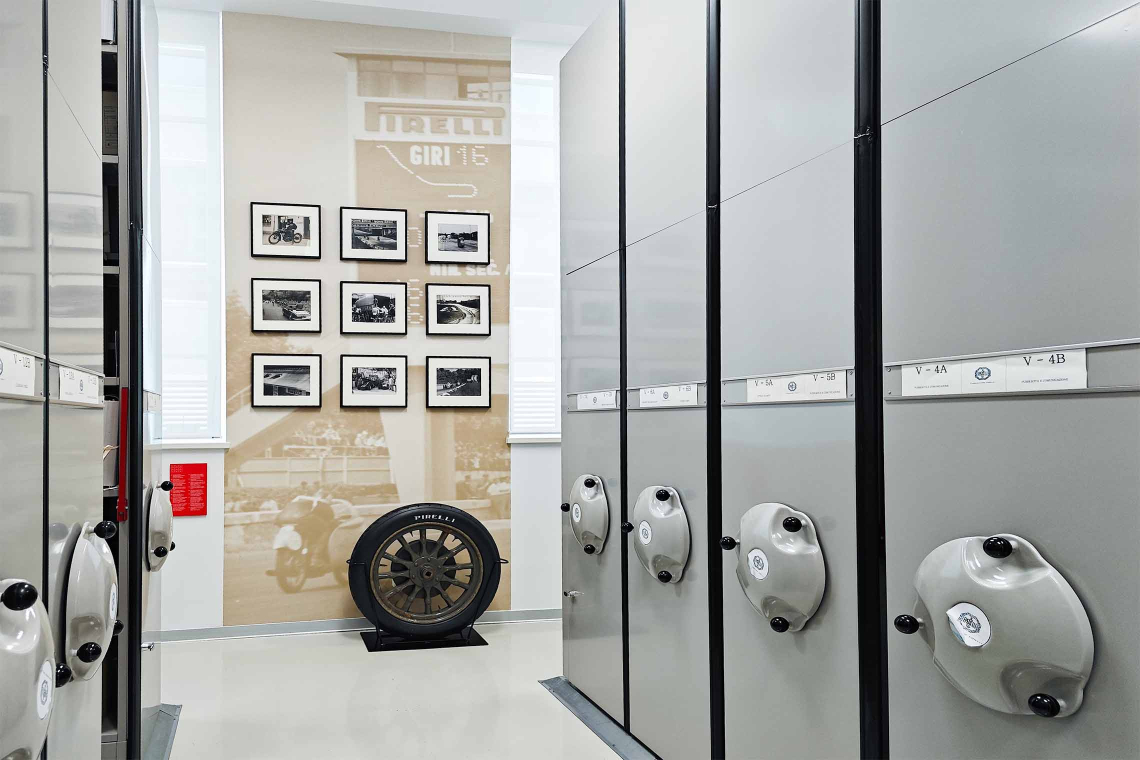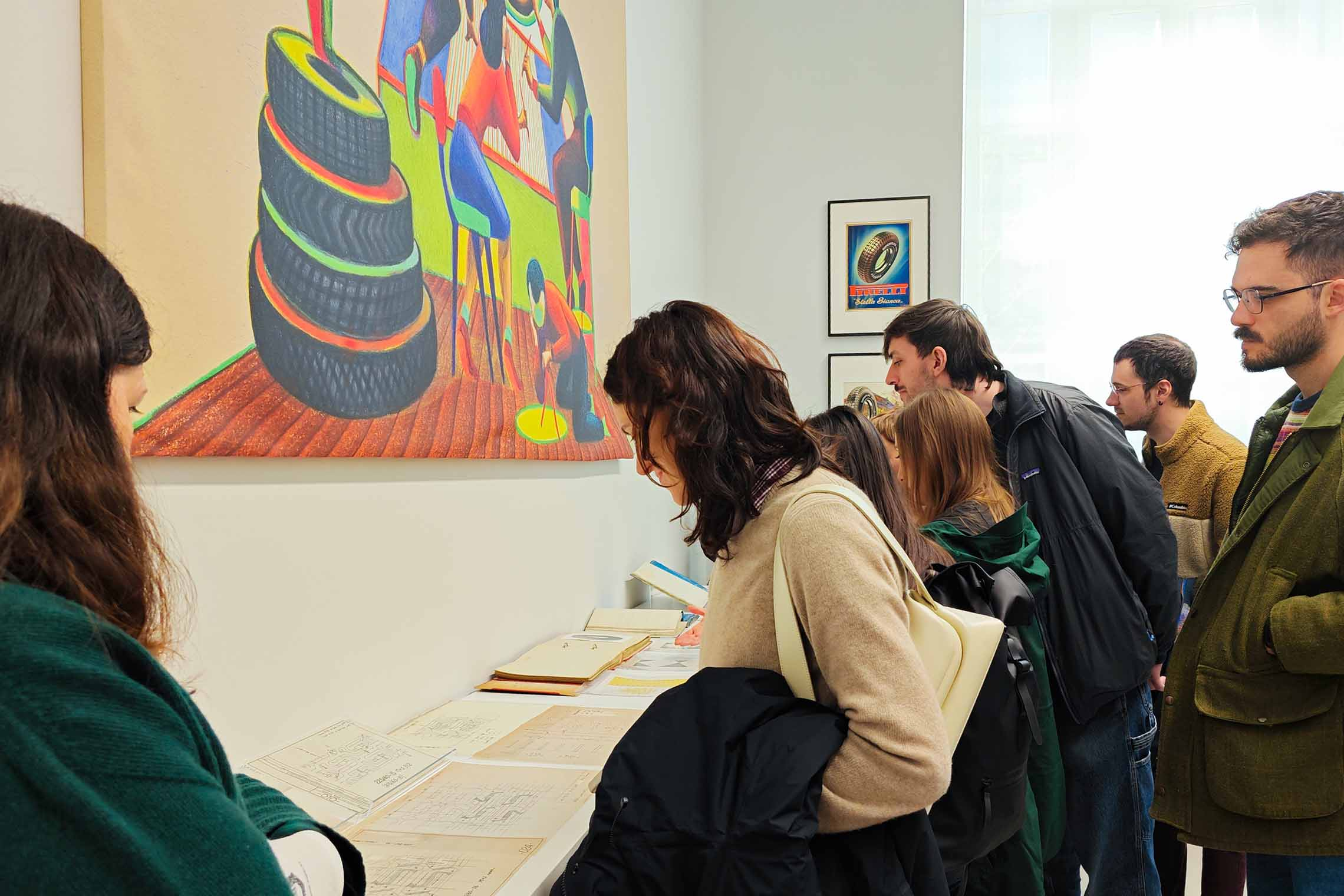
Recently, we had the opportunity to visit the Pirelli Foundation in Milan—a place that allowed us to immerse ourselves in a remarkable heritage of vintage posters, original sketches, and iconic advertising campaigns that have made history. A narrative where art and technology come together, leaving an indelible mark on the landscape of industrial design.

Pirelli's design history is a fascinating journey through innovation and creativity. Since the 1950s, the company has collaborated with some of the greatest designers and graphic artists, shaping a unique aesthetic.
Artists like Bob Noorda, Alan Fletcher, and Bruno Munari have played a pivotal role in Pirelli’s visual communication, crafting iconic advertising campaigns and logos that have left a lasting impression on collective imagination. Over time, Pirelli’s graphic style has evolved from hand-drawn illustrations to dynamic photography, highlighting the worlds of sports, mobility, and technological innovation.
Pirelli’s design influence extends beyond communication. Its distinctive tire treads, high-performance rubber soles for technical footwear, and innovative materials used across various industries have become hallmarks of excellence. The brand’s deep connection with the world of sports is undeniable—from Formula 1 tires to sponsorships in football and cycling.


Alongside the evolution of its design, Pirelli’s industrial history has also developed significantly. The company’s first factory was established in the Ponte Seveso area of Milan in the late 19th century. By 1909, its rapid growth led to the creation of the vast Bicocca complex. Bovisa also played a central role throughout the 20th century, housing cutting-edge production facilities.
Today, the Pirelli historical archive preserves this extraordinary legacy of design and ingenuity, showcasing over a century of innovation across industry, creativity, and visual culture.
